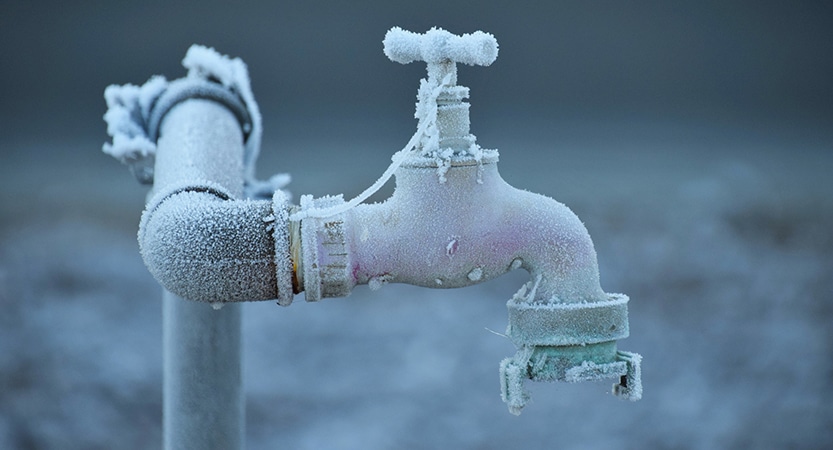Essential Tips to Avoid Frozen Plumbing in Winter: Specialist Guidance
Essential Tips to Avoid Frozen Plumbing in Winter: Specialist Guidance
Blog Article
How do you really feel about Prevent Frozen Pipes ?

Winter can ruin your plumbing, especially by freezing pipelines. Below's just how to avoid it from occurring and what to do if it does.
Intro
As temperatures drop, the risk of frozen pipes increases, possibly leading to costly repairs and water damages. Recognizing exactly how to prevent icy pipes is crucial for homeowners in chilly climates.
Understanding Icy Pipes
What creates pipes to ice up?
Pipelines ice up when subjected to temperature levels listed below 32 ° F (0 ° C) for extended periods. As water inside the pipelines freezes, it broadens, taxing the pipeline wall surfaces and potentially triggering them to rupture.
Risks and problems
Icy pipes can cause water disturbances, residential property damage, and pricey repair services. Ruptured pipelines can flooding homes and trigger considerable architectural damage.
Signs of Frozen Piping
Recognizing frozen pipelines early can avoid them from rupturing.
Just how to identify icy pipelines
Look for lowered water flow from taps, unusual odors or sounds from pipelines, and visible frost on revealed pipelines.
Prevention Tips
Shielding susceptible pipelines
Cover pipelines in insulation sleeves or utilize warm tape to shield them from freezing temperatures. Concentrate on pipelines in unheated or exterior locations of the home.
Home heating techniques
Keep interior areas appropriately warmed, specifically locations with pipes. Open closet doors to enable warm air to circulate around pipelines under sinks.
Safeguarding Outdoor Plumbing
Garden hose pipes and outdoor faucets
Disconnect and drain garden hoses prior to winter. Install frost-proof spigots or cover outdoor taps with insulated caps.
What to Do If Your Pipelines Freeze
Immediate activities to take
If you think icy pipelines, keep faucets open to ease pressure as the ice melts. Utilize a hairdryer or towels soaked in hot water to thaw pipelines gradually.
Long-Term Solutions
Structural modifications
Consider rerouting pipelines away from outside walls or unheated locations. Add extra insulation to attic rooms, basements, and crawl spaces.
Updating insulation
Purchase high-quality insulation for pipelines, attic rooms, and wall surfaces. Correct insulation helps preserve constant temperature levels and minimizes the threat of icy pipes.
Verdict
Stopping icy pipes requires positive actions and quick reactions. By understanding the causes, indications, and preventive measures, home owners can secure their plumbing during winter.
6 Proven Ways to Prevent Frozen Pipes and Protect Your Home
Disconnect and Drain Garden Hoses
Before winter arrives, start by disconnecting your garden hoses and draining any remaining water. Close the shut-off valves that supply outdoor hose bibs and leave the outdoor faucet open to allow any residual water to drain. For extra protection, consider using faucet covers throughout the colder months. It’s also important to drain water from any sprinkler supply lines following the manufacturer’s directions.
Insulate Exposed Pipes
Insulating your pipes is an effective way to prevent freezing. Pipe insulation is readily available at home improvement stores and is relatively inexpensive. Pay close attention to pipes in unheated areas such as the attic, basement, crawl spaces, or garage. Apply foam insulation generously to create a buffer against the cold. You can also wrap your pipes in heat tape or thermostat-controlled heat cables for added warmth.
Seal Air Leaks
Inspect your home for any cracks or openings that could let in cold air. Seal any holes around the piping in interior or exterior walls, as well as the sill plates where your home rests on its foundation. Additionally, make sure to keep your garage door closed unless you’re entering or exiting. Leaving it open creates a significant air leak that can lead to frozen pipes.
Allow Warm Air Circulation
During cold snaps, it’s essential to allow warm air to circulate evenly throughout your home. Leave interior doors ajar to promote better airflow. Open kitchen and bathroom cabinets to help distribute heat consistently around the rooms. If you have small children or pets, be sure to remove any household chemicals or potentially harmful cleaners from open cabinets for safety.
Let Faucets Drip
A small trickle of water can make a big difference in preventing ice formation inside your pipes. When temperatures drop significantly, start a drip of water from all faucets served by exposed pipes. This continuous flow helps prevent the water from freezing. Additionally, running a few faucets slightly can relieve pressure inside the pipes, reducing the chances of a rupture if the water inside does freeze.
https://choateshvac.com/6-proven-ways-to-prevent-frozen-pipes-and-protect-your-home/

As an enthusiastic person who reads about Helpful Tips to Prevent Frozen Pipes this Winter, I figured sharing that article was smart. Enjoyed our write-up? Please quickly share it. Let another person check it out. Thanks so much for taking the time to read it.
Schedule An Appointment Report this page